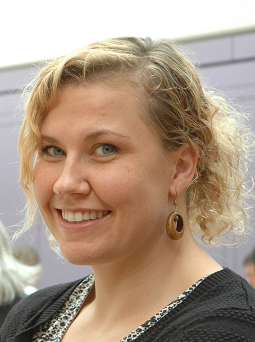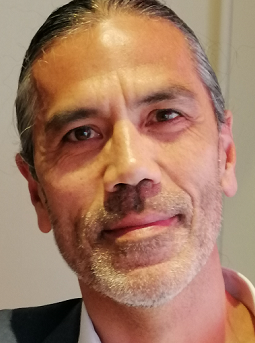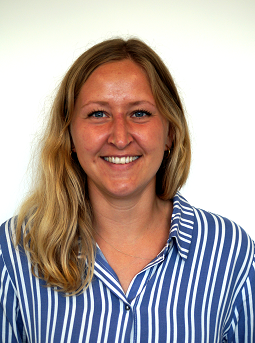Hoei-Hansen CE, Weber L, Johansen M, Fabricius R, Hansen JK, Viuff ACF, Hahn GH, Østergaard E, Duno M, Larsen VA, Madsen CG, Røhder K, Elvrum AKG, Laugesen B, Ganz M, Madsen KS, Willerslev-Olsen M, Debes NM, Jan Christensen J, Christensen R, Rackauskaite G (2023) Cerebral Palsy – Early Diagnosis and Intervention Trial: protocol for the prospective multicentre CP-EDIT study with focus on diagnosis, prognostic factors, and intervention. BMC Pediatrics 23:544. https://doi.org/10.1186/s12887-023-04312-7
Johnsen LK, Larsen KM, Fuglsang SA, Ver Loren van Themaat AH, Baaré WFC, Madsen KS, Madsen KH, Hemager N, Andreassen AK, Veddum L, Greve AN, Nejad AB, Burton BK, Gregersen M, Eichele H, Lund TE, Vibeke Bliksted, Thorup AAE, Mors O, Plessen KJ, Nordentoft M, Siebner HR (2023) Executive Control and Associated Brain Activity in Children With Familial High-Risk of Schizophrenia or Bipolar Disorder: A Danish Register-based Study. Schizophrenia Bulletin. https://doi.org/10.1093/schbul/sbad134
Larsen KM, Madsen KS, Ver Loren van Themaat AH, Thorup AAE, Plessen KJ, Nordentoft M, Siebner HR (2024) Children at familial high risk of schizophrenia and bipolar disorder exhibit altered connectivity patterns during pre-attentive processing of an auditory prediction error. Schizophrenia Bulletin 50(1): 230. https://doi.org/10.1093/schbul/sbad092
Fjell AM, Sørensen Ø, Wang Y, Amlien IK, Baaré WFC, Bartrés-Faz D, Bertram L, Boraxbekk CJ, Brandmaier AM, Demuth I, Drevon CA, Ebmeier KP, Ghisletta P, Kievit R, Kühn S, Madsen KS, Mowinckel AM, Nyberg L, Sexton CE, Solé-Padullés C, Vidal-Piñeiro D, Wagner G, Watne LO, Walhovd KB (2023) No phenotypic or genotypic evidence for a link between sleep duration and brain atrophy. Nature Human Behavior 7:2008-2022. https://doi.org/10.1038/s41562-023-01707-5
Plachti A, Latzman RD, Maleki S, Hoffstaedter F, Skak Madsen K, Baare W, Siebner HR, Eickhoff SB, Genon S (2023) Progress in Neurobiology Hippocampal anterior- posterior shift in childhood and adolescence. Progress in Neurobiology 225:102447. https://doi.org/10.1016/j.pneurobio.2023.102447
Plachti A, Baaré WFC, Johansen LB, Thompson WK, Siebner HR, Madsen KS (2023) Stability of associations between neuroticism and microstructural asymmetry of the cingulum during late childhood and adolescence: Insights from a longitudinal study with up to 11 waves. Human Brain Mapping 44:1548–1564. https://doi.org/10.1002/hbm.26157
Fuhrman D*, Madsen KS*, Johansen LB, Baaré WFC, Kievit RA (2022) The midpoint of cortical thinning between late childhood and early adulthood differs across individuals and regions: Evidence from longitudinal modelling in a 12-wave sample. Neuroimage 261, 119507. https://doi.org/10.1016/j.neuroimage.2022.119507
Thorup AAE, Hemager N, Bliksted VF, Greve AN, Ohland J, Wilms M, Rohd SB, Merete Birk, Bundgaard AF, Laursen AF, Jefsen OH, Steffensen NL, Andreassen AK, Veddum L, Knudsen CB, Enevoldsen M, Nymand M, Brandt JM, Søndergaard A, Carmichael L, Gregersen M, Falkenberg MK, Burton HBK, Dietz D, Nudel R, Johnsen LK, Larsen KM, Meder D, Hulme OJ, Barré WFC, Madsen KS, Lund TE, Østergaard L, Juul A, Kjær T, Hjorthøj C, Siebner HR, Mors O, Nordentoft M (2022) The Danish High Risk and Resilience Study – VIA 15 – a study protocol for the third clinical assessment of a cohort of 522 children born to parents diagnosed with schizophrenia, bipolar disorder or none of these disorders. Frontiers in Psychiatry 13, 809807. https://doi.org/10.3389/fpsyt.2022.809807
Solé-Padullés C, Macià D, Andersson M, Stiernstedt M, Pudas S, Düzel S, Zsoldos E, Ebmeier KP, Binnewies J, Drevon CA, Brandmaier AM, Mowinckel AM, Fjell AM, Madsen KS, Baaré WFC, Lindenberger U, Nyberg L, Walhovd KB, Bartrés-Faz D (2022) No Association Between Loneliness, Episodic Memory and Hippocampal Volume Change in Young and Healthy Older Adults: A Longitudinal European Multicenter Study. Frontiers in Aging Neuroscience 14, 1–13. https://doi.org/10.3389/fnagi.2022.795764
Vidal-Pineiro D, Wang Y, Krogsrud SK, Amlien IK, Baaré WFC, Bartres-Faz D, Bertram L, Brandmaier AM, Drevon CA, Düzel S, Ebmeier K, Henson RN, Junqué C, Kievit RA, Kühn S, Leonardsen E, Lindenberger U, Madsen KS, Magnussen F, Mowinckel AM, Nyberg L, Roe JM, Segura B, Smith SM, Sørensen Ø, Suri S, Westerhausen R, Zalesky A, Zsoldos E, Walhovd KB, Fjell A (2021) Individual variations in ‘brain age’ relate to early-life factors more than to longitudinal brain change. eLife 10, 1–19. https://doi.org/10.7554/eLife.69995
Walhovd KB, Fjell AM, Wang Y, Amlien IK, Mowinckel AM, Lindenberger U, Düüzel S, Bartréés-Faz D, Ebmeier KP, Drevon CA, Baaré WFC, Ghisletta P, Johansen LB, Kievit RA, Henson RN, Madsen KS, Nyberg L, Harris JR, Soléé-Padulléés C, Pudas S, Sørensen Ø, Westerhausen R, Zsoldos E, Nawijn L, Lyngstad TH, Suri S, Penninx B, Rogeberg OJ, Brandmaier AM (2021) Education and income show heterogeneous relationships to lifespan brain and cognitive differences across European and US cohorts. Cerebral Cortex 1–16. https://doi.org/10.1093/cercor/bhab248
Marybel Robledo Gonzalez , William F.C. Baaré, Donald J. Hagler Jr., Sarah Archibald, Martin Vestergaard, Kathrine Skak Madsen. Brain structure associations with phonemic and semantic fluency in typically-developing children. Developmental Cognitive Neuroscience. 2021. https://doi.org/10.1016/j.dcn.2021.100982
Vestergaard M, Baaré WFC, Holm SK, Madsen CG, Paulson OB, Born AP, Uldall P, Siebner HR, Madsen KS (2021) Glucocorticoid treatment for non-cerebral diseases in children and adolescents is associated with differences in uncinate fasciculus microstructure. Pediatric Research. https://www.nature.com/articles/s41390-021-01394-w
Madsen KS, Johansen LB, Thompson WK, Siebner HR, Jernigan TL, Baaré WFC (2020). Maturational trajectories of white matter microstructure underlying the right presupplementary motor area reflect individual improvements in motor response cancellation in children and adolescents. Neuroimage, doi: 10.1016/j.neuroimage.2020.117105
Holm, S. K., Madsen, K. S., Vestergaard, M., Born, A. P., Paulson, O. B., Siebner, H. R., Uldall, P. & Baaré, W. F. C. (2019) Previous glucocorticoid treatment in childhood and adolescence is associated with long-term differences in subcortical grey matter volume and microstructure. NeuroImage. Clinical. 23, p. 1-11, 101825.
Madsen KS, Jernigan TL, Vestergaard M, Mortensen EL, Baare WFC. (2018). Neuroticism is linked to microstructural left-right asymmetry of fronto-limbic fibre tracts in adolescents with opposite effects in boys and girls. Neuropsychologia. 114, 1-10.
Holm SK, Madsen KS, Vestergaard M, Paulson OB, Uldall P, Siebner HR, Born AP, Baare WFC. (2018). Total brain, cortical, and white matter volumes in children previously treated with glucocorticoids. Pediatr Res. 83(4), 804-812.
Vestergaard M, Holm SK, Uldall P, Siebner HR, Paulson OB, Baaré WFC, Madsen KS. Glucocorticoid treatment earlier in childhood and adolescence show dose-response associations with diurnal cortisol levels. Developmental Psychobiology, 2017, 59(8): 1010-1020.
Angstman S, Madsen KS, Skimminge A, Jernigan TL, Baaré WF, Siebner HR. Microstructural asymmetry of the corticospinal tracts predict right-left differences incircle drawing skill in right-handed adolescents. Brain Structure and Function, 2016, Brain Struct Funct. 2016 Dec;221(9):4475-4489.
Holm SK, Vestergaard M, Madsen KS, Baaré WF, Hammer TB, Born AP, Siebner HR, Paulson OB, Uldall PV. Children and adolescents previously treated with glucocorticoids display lower verbal intellectual abilities. Acta Paediatrica, 2015, 104(8): 784-91.
Aarnink SH, Vos SB, Leemans A, Jernigan TL, Madsen KS, Baaré WFC. Automated Longitudinal Intra-Subject Analysis (ALISA) for diffusion MRI tractography. Neuroimage, 2014, 86:404-416.
Klarborg B; Madsen KS; Vestergaard M; Skimminge A; Jernigan TL; Baaré WFC. Sustained attention is associated with right superior longitudinal fasciculus and superior parietal white matter microstructure in children. Human Brain Mapping, 2013, 34(12): 3216-32.
Madsen KS, Jernigan TL, Iversen P, Frokjaer VG, Mortensen EL, Knudsen GM, Baare WF. (2012). Cortisol awakening response and negative emotionality linked to asymmetry in major limbic fibre bundle architecture. Psychiatry Res. 201(1), 63-72.
Madsen KS, Jernigan TL, Iversen P, Frokjaer VG, Knudsen GM, Siebner HR, Baare WF. (2012). Hypothalamic-pituitary-adrenal axis tonus is associated with hippocampal microstructural asymmetry. Neuroimage. 63(1), 95-103.
Madsen KS; Baaré WF; Skimminge A; Vestergaard M; Siebner HR; Jernigan TL. Brain microstructural correlates of visuospatial choice reaction time in children. Neuroimage, 2011, 58(4): 1090-1100.
Jernigan TL; Baare WF; Stiles J; Madsen KS. Postnatal brain development: Structural imaging of dynamic neurodevelopmental processes. Progress in Brain Research 2011, 189: 77-92.
Vestergaard M; Madsen KS; Baare WF; Skimminge A; Ejersbo LR; Ramsoy TZ; Gerlach C; Akeson P; Paulson OB; Jernigan TL. White matter microstructure in superior longitudinal fasciculus associated with spatial working memory performance in children. Journal of Cognitive Neuroscience, 2011, 23(9): 2135-2146.
Madsen KS; Baare WF; Vestergaard M; Skimminge A; Ejersbo LR; Ramsoy TZ; Gerlach C; Akeson P; Paulson OB; Jernigan TL. Response inhibition is associated with white matter microstructure in children. Neuropsychologia, 2010, 48(4): 854-862.






